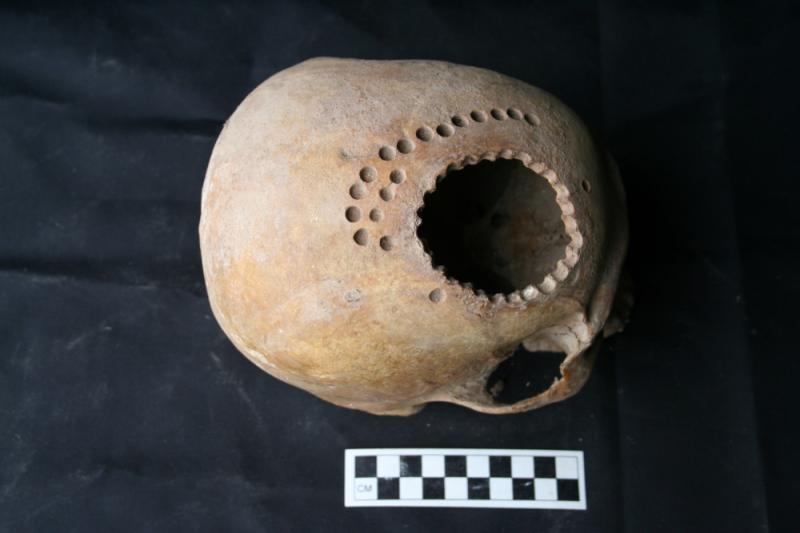 SANTA BARBARA, CALIFORNIA—While excavating burial caves in the Peruvian province of Andahuaylas, University of California Santa Barbara bioarchaeologist Danielle Kurin and her team have found the remains of 32 individuals who lived from A.D 1000 to 1250, a chaotic period that followed the collapse of the Wari Empire in the region. Among those individuals, Kurin has found evidence of at least 45 separate examples of trepanation, or cranial surgery. While trepanation was practiced during the prosperous rule of the Wari, it was not done at the scale evident in the more tumultuous period that followed the empire's collapse, when increasing violence meant head wounds were more frequent. "It is precisely during times of collapse that we see people's resilience and moxie coming to the fore," says Kurin. "In the same way that new types of bullet wounds from the Civil War resulted in the development of better glass eyes, the same way IED's are propelling research in prosthetics in the military today, so, too, did these people in Peru employ trepanation to cope with new challenges like violence, disease, and depravation 1,000 years ago." Based on cuts on some of the skulls, Kurin thinks they belonged to already dead individuals who served as cadavers for prehistoric surgeons honing their craft.
SANTA BARBARA, CALIFORNIA—While excavating burial caves in the Peruvian province of Andahuaylas, University of California Santa Barbara bioarchaeologist Danielle Kurin and her team have found the remains of 32 individuals who lived from A.D 1000 to 1250, a chaotic period that followed the collapse of the Wari Empire in the region. Among those individuals, Kurin has found evidence of at least 45 separate examples of trepanation, or cranial surgery. While trepanation was practiced during the prosperous rule of the Wari, it was not done at the scale evident in the more tumultuous period that followed the empire's collapse, when increasing violence meant head wounds were more frequent. "It is precisely during times of collapse that we see people's resilience and moxie coming to the fore," says Kurin. "In the same way that new types of bullet wounds from the Civil War resulted in the development of better glass eyes, the same way IED's are propelling research in prosthetics in the military today, so, too, did these people in Peru employ trepanation to cope with new challenges like violence, disease, and depravation 1,000 years ago." Based on cuts on some of the skulls, Kurin thinks they belonged to already dead individuals who served as cadavers for prehistoric surgeons honing their craft.